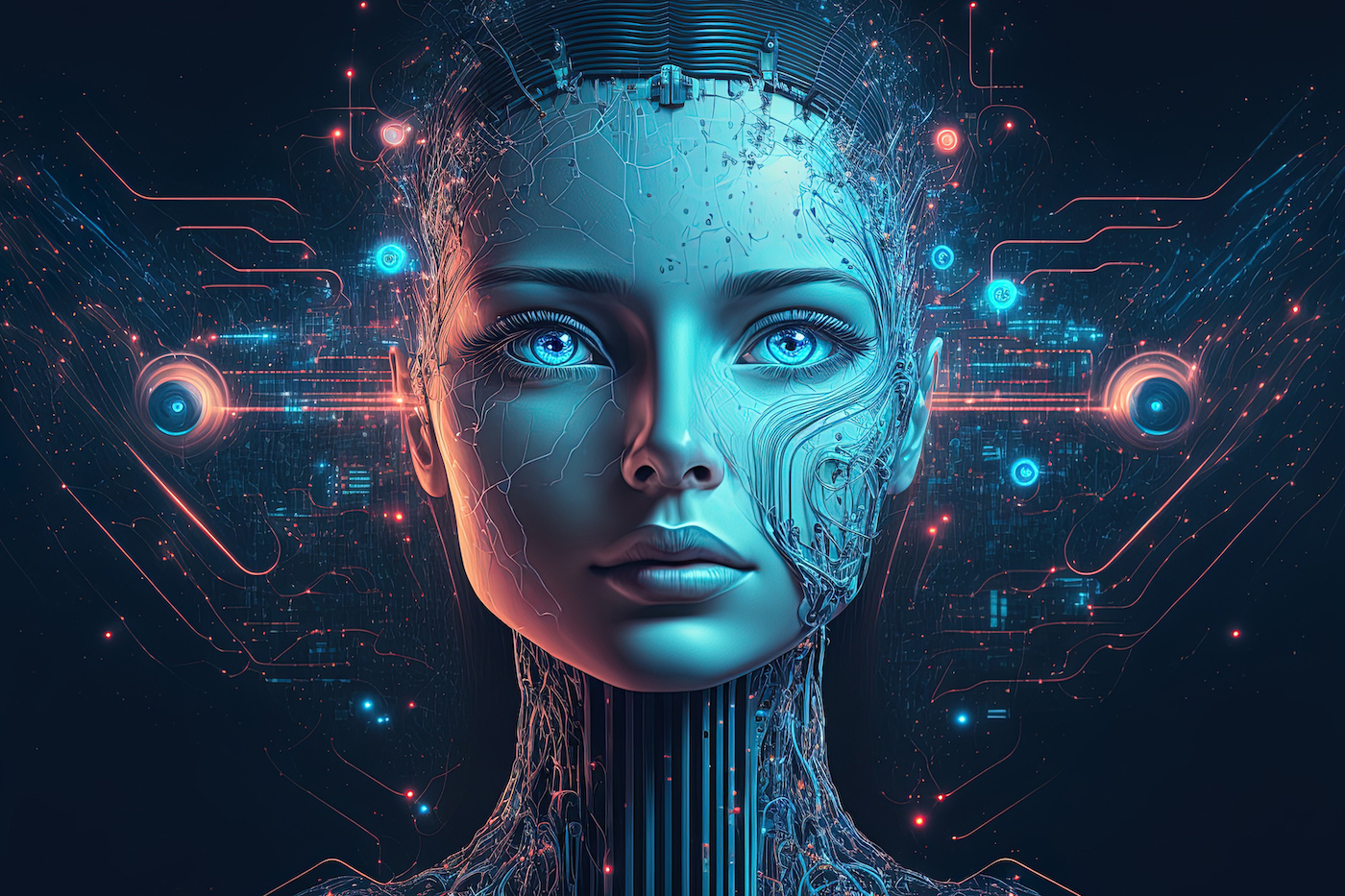Because of its potential to revolutionise how we live and work, artificial intelligence (AI) has become a hot topic in recent months. As a result, there is a lot to learn about it. In this post, we’ll go over the fundamentals of artificial intelligence, such as the various types of AI, how they work, and the applications you can use if you’re a creative type. We’ll also talk about AI’s future and how to use it responsibly.
What is AI?
Artificial intelligence refers to a set of technologies that enable computers to perform complex tasks such as visual perception, language comprehension and translation, data analysis, question answering, artistic creation, video generation, and many others. AI, which serves as the foundation of modern computing, demonstrates astounding capabilities. For example, it can easily convert a text prompt into a high-quality image (such as the images in this post), make background removal from photos easier, enable autonomous driving in vehicles, and even engage customers through AI-powered chatbots.
The origins of artificial intelligence can be traced back to 1955, when John McCarthy, an assistant professor of mathematics at Dartmouth, introduced this groundbreaking field of study. McCarthy envisioned AI as a means to “utilise language, develop abstractions and concepts, tackle problems typically reserved for humans, and enhance its own performance.” Despite AI’s broad scope, its fundamental goal remains consistent: developing computer programmes capable of problem solving and goal achievement on par with human capabilities.
Types of AI
To truly comprehend what AI is, you must first comprehend the various types of AI available. There are three types of artificial intelligence: narrow or weak AI, general or strong AI, and super AI. Let’s go over each one so you can get your head around it.
1. Artificial Intelligence Is Limited or Weak
The computer does not have full cognitive abilities with this type of AI; its intelligence is based on training for that specific task. Image recognition systems, speech recognition systems, and AI chatbots are examples of narrow AI. Digital voice assistants like Siri and Alexa, search engines like Google or Bing, and self-driving cars like Telsa, for example, all rely on narrow or weak AI to function. Indeed, all modern AI tools, such as AI art generators and chatbots, are examples of weak AI.
2. General or powerful artificial intelligence
The next type of AI is known as artificial general intelligence (AGI), which is also known as general or strong AI. These systems are not limited to a single field of expertise and can perform tasks that weak AI programmes cannot. While we have yet to reach this level of technology, researchers hope to create intelligence comparable to that of humans. The ultimate goal of strong AI is to create a machine that is self-aware, can discern needs and emotions, and can solve any number of problems, learn, and plan for the future. So far, the only examples of general AI are in films, with characters like R2-D2 or Hal in 2001: A Space Odyssey.
3. Super Artificial Intelligence
Artificial superintelligence (ASI) is a type of AI in which machines may surpass humans. These systems would be able to predict the future, develop new scientific methods, and much more. Scientists could use ASI to solve some of our most pressing issues, such as curing cancer, ending world hunger, and balancing the federal budget. While these appear to be out of reach, scientists hope to use AI to improve our world. However, this type of artificial intelligence has a two-edged sword. On the one hand, we could use this technology to improve our lives. On the other hand, it has the potential to end life as we know it.
What Is the Process of Artificial Intelligence?
AI works by processing large amounts of data and applying algorithms, or a set of rules, to recognise keywords and determine the type of assistance you require. It is programmed to think, act, and respond in the same way that humans do. It uses three types of machine learning: supervised, unsupervised, and reinforcement learning to create algorithms that can provide solutions, answer questions, make predictions, or make suggestions.
When an artificial intelligence system processes data, it tests and measures its performance before learning. Machines, unlike humans, do not require breaks, allowing them to perform millions of tasks at once while learning as they go. It is critical to understand that AI is a field of study rather than a single computer programme or application.
The AI Future
The artificial intelligence revolution has arrived, whether we like it or not, and it is up to each of us to embrace it, learn from it, and use it responsibly. We should expect some challenges as this ground-breaking technology continues to evolve. While some fear job losses, others remain optimistic that new opportunities will emerge to replace those lost. Regardless, we owe it to ourselves to learn how to use it to boost productivity, increase our employability, and responsibly usher in this new and exciting era.


1 thought on “What is AI? Artificial Intelligence World”